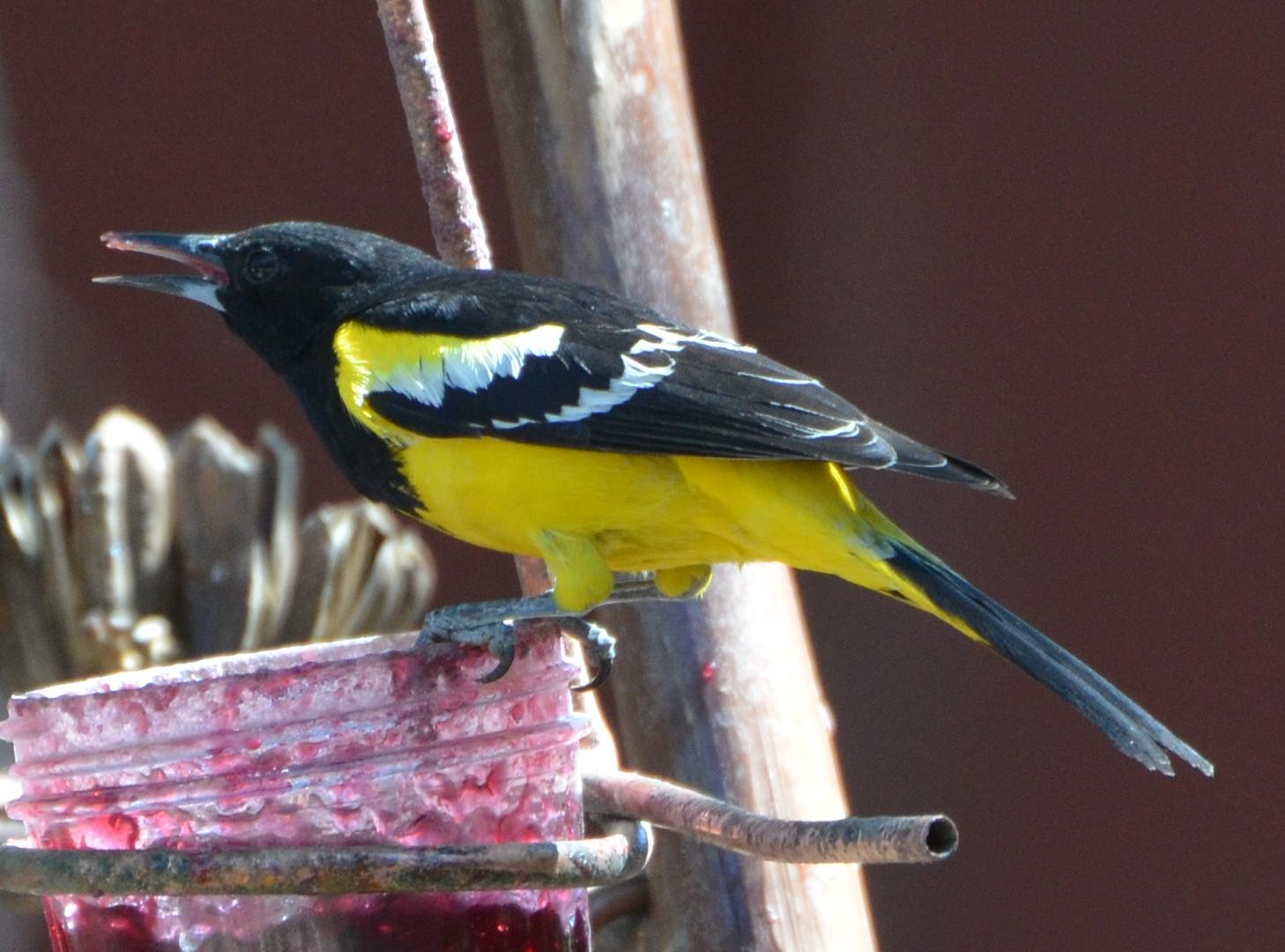Scott's Oriole
A species of New world orioles Scientific name : Icterus parisorum Genus : New world orioles
Scott's Oriole, A species of New world orioles
Botanical name: Icterus parisorum
Genus: New world orioles
Content
Description General Info
 Photo By Andy Reago & Chrissy McClarren , used under CC-BY-2.0 /Cropped and compressed from original
Photo By Andy Reago & Chrissy McClarren , used under CC-BY-2.0 /Cropped and compressed from original Description
The Scott's oriole (Icterus parisorum) is a medium-sized icterid (the same family as many blackbirds, meadowlarks, cowbirds, grackles, and others, including the New World orioles). It is primarily found in the Southwestern United States and south to Baja California Sur and central Mexico. It is very common from Sacramento and south in California. This bird was named by Darius N. Couch in honor of General Winfield Scott. Although it was later discovered that it had previously been described by Bonaparte, the common name was retained. Measurements: Length: 9.1 in (23 cm) Weight: 1.1-1.4 oz (32-41 g) Wingspan: 12.6 in (32 cm) 
Size
19-23 cm (7.5-9 in)
Colors
Black
Yellow
Bronze
White
Life Expectancy
7 years
Nest Placement
Tree
Clutch Size
1 - 5 eggs
Feeding Habits
Scott's Oriole's diet mainly consists of insects, nectar, and some fruit. They exhibit versatile foraging tactics such as ground scavenging and acrobatic maneuvers in foliage to capture prey, which includes ants, bees, beetles, and butterfly larvae. They also consume monarchs in central Mexico, occasional small lizards, and engage in nectar feeding from flowers and hummingbird feeders.
Habitat
Scott's Oriole's habitat spans arid foothills and mountains from desert fringes to wooded areas, typically avoiding dense low desert cactus regions. They adapt to elevations between 980 and 8,200 feet, with vegetation like yucca, agave, pinyon pine, juniper, and live oak. At lower altitudes, they frequent desert oases with palms and Joshua trees. Soaptree and Torrey yucca species suggest breeding sites, as do nesting habitats that include a variety of plants and trees.
Nest Behavior
The female scott's Oriole selects the site for her nest - usually lower than those of other orioles. They lay their eggs after meticulously constructing the nest, engaging in parental care that ensures the survival and health of their young.
Nest Characteristics
Scott's Oriole's nests are basketlike, built mainly from yucca and cactus fibers, grass, and other materials. They're lined with plant down, fibers, and occasionally hair or feathers. Measuring around 4.2 inches wide and 4 inches tall, these nests are typically located 5-7 feet above ground in trees or tall plants.
Dite type
Insectivorous
General Info
Feeding Habits
Bird food type
Bird Feeder Type

Platform
Sounds
Song
Recording location: Mexico
Song
Recording location: Mexico
Behavior
Scott's Oriole typically exhibit monogamous relationships, though these bonds generally last only for the breeding season. The courtship involves males pursuing females in flight, ground displays of waddling, and singing, which both indicates a display of territory and encourages mate selection. These birds demonstrate territorial behavior, with the size of the territory varying based on habitat quality. Both sexes participate in singing duets early in the nesting season, and they also exhibit vigilant behavior, defending their nest against intruders, sometimes through direct confrontation. When it comes to feeding their young, scott's Oriole travel significant distances due to the sparse distribution of food in their desert habitats. They share responsibilities in incubation and chick-rearing, and after the young have fledged, families forage together. Prior to migration in August, they may raise multiple broods within the short nesting window afforded to them in the U.S. Interestingly, some young males may attempt nesting without having developed the full adult plumage.
Species Status
Not globally threatened.

 Photo By Andy Reago & Chrissy McClarren , used under CC-BY-2.0 /Cropped and compressed from original
Photo By Andy Reago & Chrissy McClarren , used under CC-BY-2.0 /Cropped and compressed from original